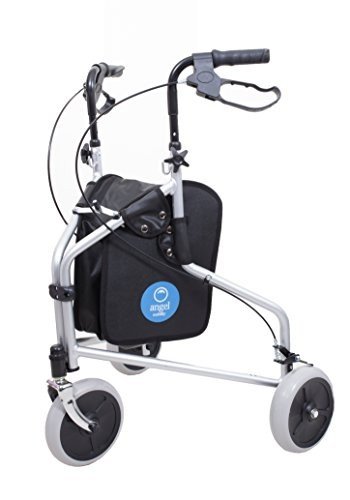A Comprehensive Guide to Buying a Mobility Scooter
Mobility scooters have actually become an essential tool for many individuals wanting to boost their independence and mobility. With a huge variety of models and features offered, picking the best mobility scooter can be daunting. This post supplies a helpful guide to help customers browse their alternatives, examine their needs, and make a notified purchase.
Understanding Mobility Scooters
Mobility scooters are electric cars created for people who experience mobility difficulties. They are particularly beneficial for senior citizens, those with disabilities, or individuals recuperating from injuries. Mobility scooters can vary widely in terms of design, features, and pricing.
Kinds Of Mobility Scooters
Before embarking on a purchase, it's vital to comprehend the different kinds of mobility scooters offered:
Three-Wheel Scooters:
- Generally more maneuverable in tight spaces
- Lightweight and portable
- Suitable for indoor use
Four-Wheel Scooters:
- Offer higher stability and balance
- Ideal for outdoor usage over numerous terrains
- Typically have a longer battery life
Foldable/Portable Scooters:
- Designed to be easily transferred and saved
- Can often suit the trunk of a vehicle
- Perfect for those who take a trip often
Sturdy Scooters:
- Built to accommodate larger individuals
- Typically featured more robust functions for outdoor use
- Usually geared up with larger batteries for extended range
Elements to Consider When Buying a Mobility Scooter
1. Weight Capacity
Pick a mobility scooter that can support the user's weight. The majority of scooters have a weight limit ranging from 250 to 500 pounds. It is crucial to ensure that the scooter can accommodate the user easily.
2. Variety and Battery Life
The variety is how far the mobility scooter can take a trip on a single charge. Normal varieties differ between 10 to 30 miles. Think about the user's everyday activities and choose a scooter with an ideal range.
3. Scooter Dimensions
Think about the size of the scooter, including its weight and dimensions. A more compact scooter may be perfect for narrow corridors and tight areas, while bigger models offer extra stability and convenience.
4. Terrain Capability
Assess where the scooter will mostly be used. If the user prepares to travel mostly on pavement, a lightweight model may be enough. However, if the user needs to pass through gravel or uneven surface areas, think about a four-wheel scooter developed for off-road usage.
Leading Features to Look For
Comfort
- Adjustable Seats: Look for scooters with cushioned and height-adjustable seats to guarantee comfort throughout travel.
- Armrests: These enhance security and support while browsing.
Safety and Visibility
- Headlights and Taillights: Essential for nighttime usage.
- Turn Signals and Reflectors: Improve presence and safety while on the road.
User-Friendly Controls
- Joystick or Drive Controls: These ought to be user-friendly and easy to manipulate.
- Easy-to-Read Displays: A control board that reveals battery life, speed, and distance can enhance the user experience.
Extra Features
- Storage Compartments: These offer added convenience for carrying personal items while on the go.
- Weather condition Protection: Consider models with rain covers or windscreens if used in variable weather.
Expense Considerations
When budgeting for a mobility scooter, prices can range anywhere from ₤ 500 to over ₤ 5,000 depending on the model, features, and brand name. Additional expenses might consist of:
- Extended Warranty: Protects versus flaws and can save money in the long run.
- Accessories: Optional functions, such as updated seats, lights, or storage services.
| Feature | Cost Range |
|---|---|
| Fundamental Models | ₤ 500 - ₤ 1,500 |
| Mid-Range Models | ₤ 1,500 - ₤ 3,000 |
| High-End Models | ₤ 3,000 - ₤ 5,000 |
Funding Options
Many retailers offer financing strategies, and some city government initiatives may supply grants or support for those in requirement. Examine potential monetary support with community resources or mobility service organizations.
FAQs about Buying a Mobility Scooter
What is the difference between a mobility scooter and a wheelchair?
Mobility scooters are motorized and allow users to navigate separately, while wheelchairs might require physical help or manual operation.
How do I preserve a mobility scooter?
Regular upkeep involves examining battery life, cleaning up the scooter, and examining tires and brakes. Always describe the user handbook for particular standards.
Can mobility scooters be used inside your home?
Yes, lots of models are designed for both indoor and outside usage. However, three-wheel scooters tend to be much better fit for indoor navigation due to their tighter turning radius.
Are mobility scooters covered by insurance coverage?
Some insurance coverage prepares cover a part of the costs for mobility scooter s if they are considered medically required. Contact your provider for specific details.
How quick can a mobility scooter go?
The majority of mobility scooters have a maximum speed varying from 4 to 8 miles per hour. However, the appropriate speed may differ depending upon local guidelines.
Buying a mobility scooter can substantially improve one's self-reliance and quality of life. By understanding the types, functions, and costs associated with mobility scooters, potential buyers can make knowledgeable decisions that suit their requirements and preferences. Customization and extensive research study are essential to guaranteeing satisfaction with this crucial financial investment.

